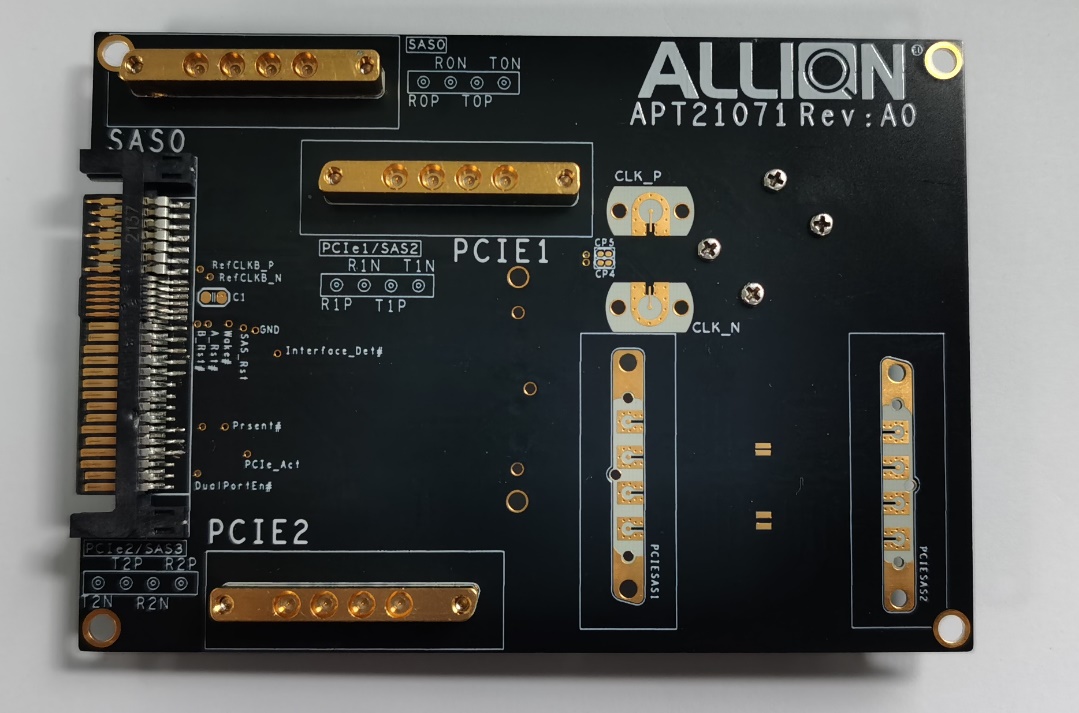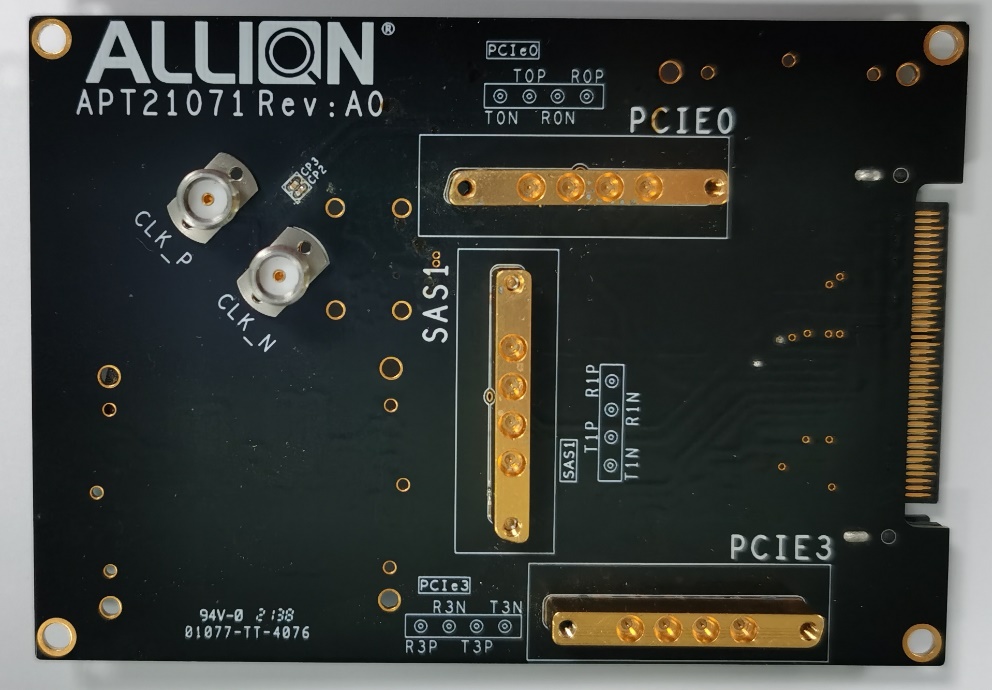Allion Labs | Casper Lee
In addition to the newly emerging PCIe M.2, there is another form factor, U.2 (SFF8639), that has been widely used for a long time. U.2 itself covers SATA, SAS, and NVMe (PCIe) related signals, which has a complex measurement process. First, you must know which mode the measured host is in before you can perform the corresponding signal measurement. In addition, different interfaces also have different differential impedance requirements. For example, SAS requires impedance matching at 90 Ohms, while PCIe requires 85 Ohms.
As a result, the U.3 interface was developed. It looks like the U.2 in appearance, but it has different signal pin assignments, with the most significant difference being in its support of Tri-Mode. Tri-Mode places SATA, SAS, and PCIe on the same pin, as opposed to U.2, which distributes SATA, SAS, and PCIe on different pins.
Due to the different positioning of U.2 and U.3, Allion has encountered troubles when measuring the two form factors. Thus, we decided to design new test fixtures which meet the above technical specifications, at the same time strengthening the design structure to reduce functional and mechanical deficiencies of commercially available fixtures. It can be used to complete U.2 and U.3 Tri-Mode measurements. In addition, our newly designed test fixture also covers the latest technical specifications, such as SAS4 and PCIe, making Allion the only lab that can provide PCIe measurement services on the U.2/U.3 form factors.
For more information on PCIe testing and test fixtures, please contact us at: service@allion.com



































